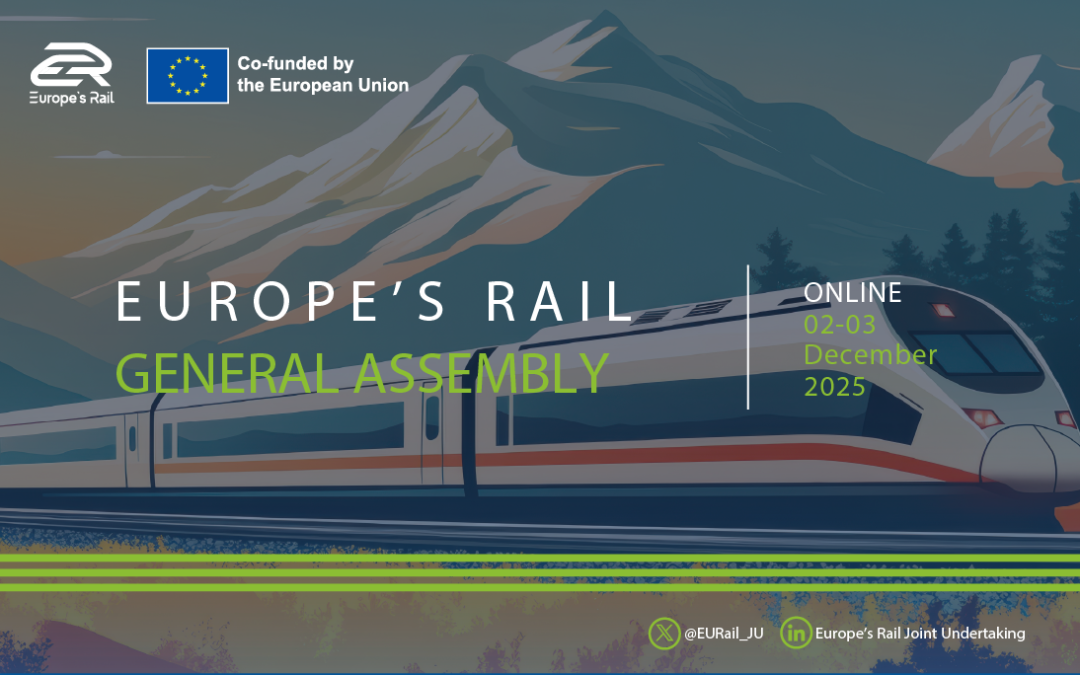On 2–3 December, the Europe's Rail General Assembly 2025 took place, providing a valuable occasion to look back at the...


Currently available work packages:
The overall objective is to define a high capacity, low cost, high reliability signalling system, based on a train-centric approach using Full Moving block principles. This Work Package builds on the future Functional Railway System Architecture defined by the System Pillar and the moving block specification defined in Shift2Rail (X2RAIL-1/3/5). The new signalling system shall dissolve the conventional separation of RBC and interlocking functionality and use a more generic and simplified safety logic by abandoning the long-established route concept and the accompanying static engineering processes. This Work Package will focus on System type Full Moving Block with Trackside Train Detection (TTD) as defined in S2R. Overall, this Work Package will align with the work to be done by the System Pillar.
The overall objective of this Work package is the development and test of Moving Block prototypes of up to TRL 6 based on the specification of the Moving block Specification Work Package. To facilitate the interoperability of new interface specifications, the prototypes will be developed independently
The overall objective of the HL3 Work Package is to align and integrate the Hybrid ERTMS/ETCS Level 3 (HL3) approach into the future Functional Railway System Architecture defined by the System Pillar and to apply the defined principles to different kinds of railways (e.g., high density lines have different needs in comparison to regional low traffic lines). For several Infrastructure Managers, HL3 is perceived as a faster and simpler way to increase capacity at a lower cost, maintaining a highly reliable signalling system, without the complexity of a Full Moving Block architecture.
The overall objective of this Work Package is the development and test of Hybrid Level 3 prototypes of up to TRL 6 based on the specification of the Hybrid Level 3 Specification Work Package. To ensure the interoperability of new interface specifications, the prototypes will be developed independently.
Given the readiness for deployment of ETCS Hybrid Level 3 methods to reduce lead-time to implementation and smart line-design methodologies will be developed.
Mainline, is here defined as the most complex kind of operations in a network, mostly around large nodes that can’t be demonstrated in full service by 2026. Therefore, modelling ATO and its operational concept as well the linkage of TMS to ATO dynamically anticipating in these complex nodes will be developed, tested and designed. Furthermore, showing the relevant advantages deriving from the synergy between the digital automatic train operation up to GoA 4 and the CCS evolution, increasing the capacity and punctuality of railway lines, by enabling ETCS L3 moving block with minimum infrastructure elements.
The main objective of this WP is to provide the bridge between FP2-R2DATO and FA6 demonstrations by supporting validation and testing of technical enablers in regional line environment before they are handed over to FA6 for further adaptation and integration. The improved CCS and automation functions will be the main technologies tested and validated, building on the activities already performed in the scope of Shift2Rail ATO (up to GoA4) tests (the very same line and vehicle). Further, the line will be used to support development process of technical enablers, even on lower TRL levels, due to simplified operational environment and flexible demonstrations planning (no regular commercial service, the line fully dedicated to tests) and approval process. Minimal set of technical enablers needed:
Currently available deliverables:
All deliverables, results and publications herewith provided reflects only the author's view and the EURAIL is not responsible for any use that may be made of the information it contains.